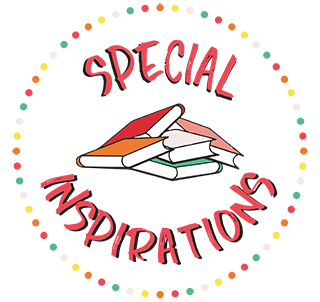Hi there! As you know I am a Dyslexia Practitioner and currently work with students in a 1:1 setting. However, I was a full time special education classroom teacher who incorporated the Orton-Gillingham Approach into my classroom. At that time, I also decided to become a TpT author because I had a difficult time finding resources (at a reasonable price) that were suitable for use with the Orton-Gillingham Approach. I struggled to find resources aligned with the structure and sequence that the approach presented and that could easily be used in the classroom.
Dyslexia affects 1 in 5 children. However, incorporating the Orton-Gillingham Approach into your classroom will help not only those affected by Dyslexia, but will help every child be successful readers and spellers. It doesn't hurt to try it, start with these ideas below!
1. Display Resources on the Walls for students to refer to when they struggle recalling a sound, spelling rule, etc. Our students need continuous review in order to strengthen the pathways between short and long term memory and to help retrieve information from their long term memory. These resources have pictures of the keywords that help the students recall the information.
You can find some resources for your classroom and/or intervention/tutorial office:

Click here for the OG Phonics Posters!
Click here for the OG Alphabet Banner!
Here are some pictures of the Alphabet Banner in my Dyslexia Therapy room:
2. Orton-Gillingham Based Task Boxes and Literacy Centers
When I was a classroom teacher, I would often search on TpT for phonics literacy centers and could never find any that worked with the Orton-Gillingham Approach. As a result, I started creating some! My most recent addition, is the ever so popular task boxes!
These task boxes are based on the Orton-Gillingham Approach and provide an easy way to differentiate within the classroom. They are also great for intervention and/or extra practice.
You can find them here:
3. Playing games during center time provides for a great review of previously taught concepts! You can find my Complete OG Board Game Bundle here:
4. File Folder Activities
Another easy way to differentiate and use the Orton-Gillingham Approach in the classroom is through the use of file folder activities! They are so easy to make, store, and pull out when needed! Use as a literacy center, early finishers, or whatever you can think of!
You can make your own or check these out! Click here!
5. Finally, make your classroom library dyslexia friendly! Adding phonetic readers to your classroom library will increase independence and prevent your struggling readers from just staring at the pages of a book during silent reading time. You could also use these readers to create comprehension questions for your struggling readers. Perhaps each student has a journal with comprehension questions for the phonetic readers that are at their level. What is great about these readers too is that they follow the Orton-Gillingham sequence and the sequence is printed on the back of the books. I also recently discovered that you can buy them for Kindle right on Amazon! Click here for a link to S.P.I.R.E Phonetic Readers on Amazon!
That is all for now! I have many more ideas and ways to incorporate the Orton-Gillingham Approach into the classroom. Search the custom categories in my TpT store for more! I hope you find what you may need!
It is my hope that you got a new idea or a new inspiration for how to incorporate the Orton-Gillingham Approach into your classroom! I would love to hear from you! How do you incorporate the Orton-Gillingham Approach into your classroom?

























Great ideas!!! I will be sharing this with my teacher friends!
ReplyDelete